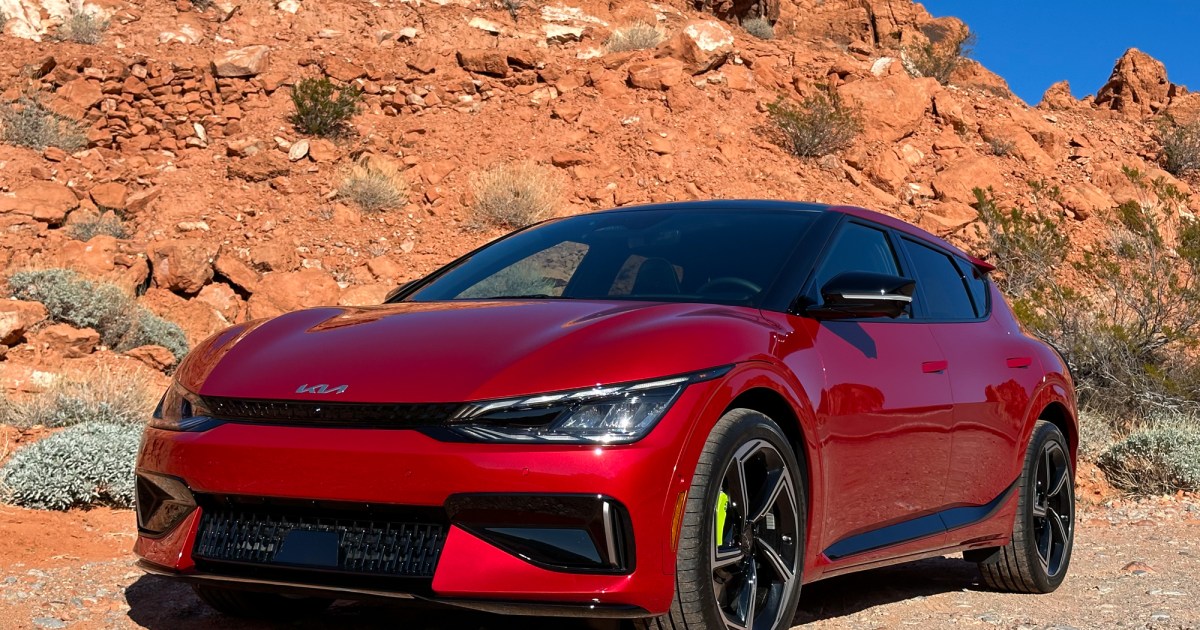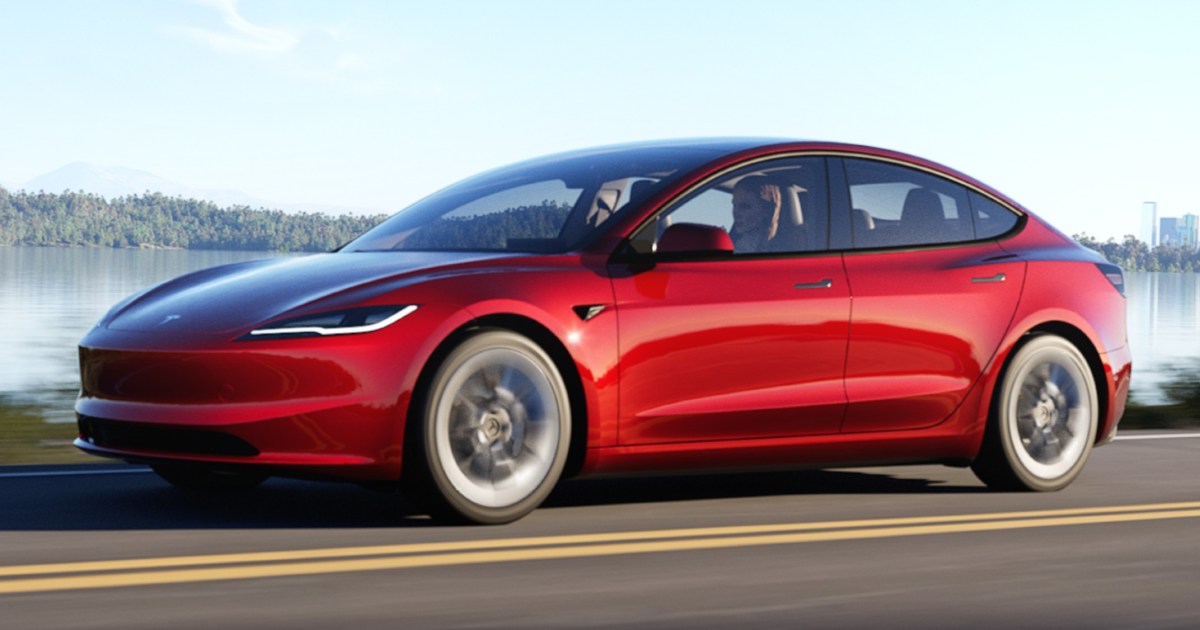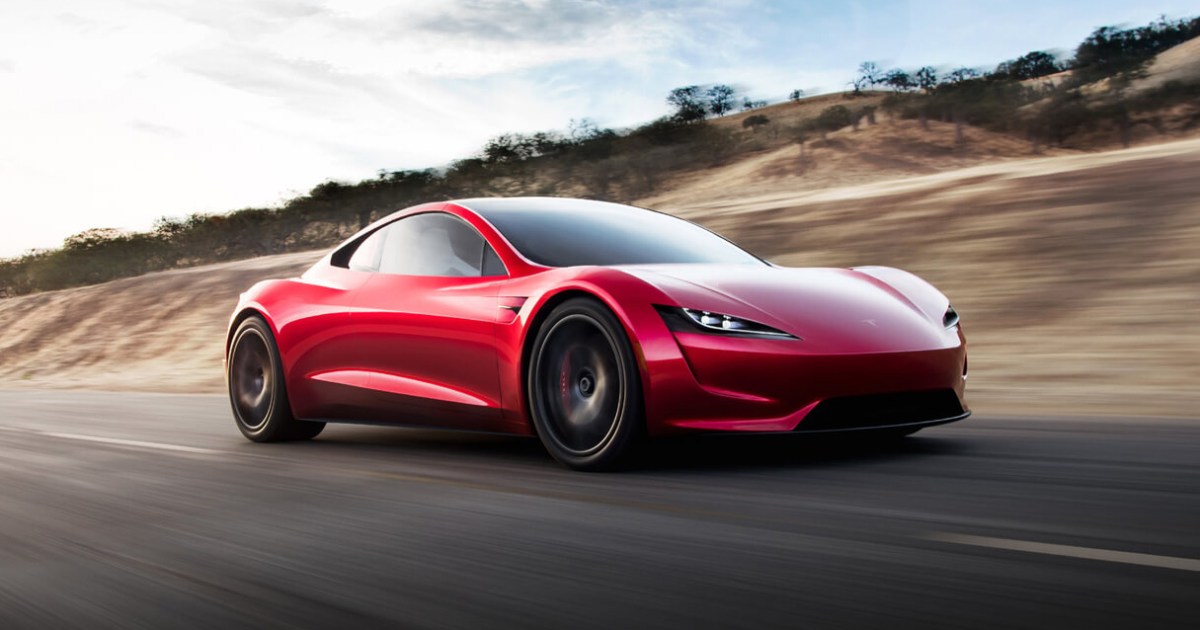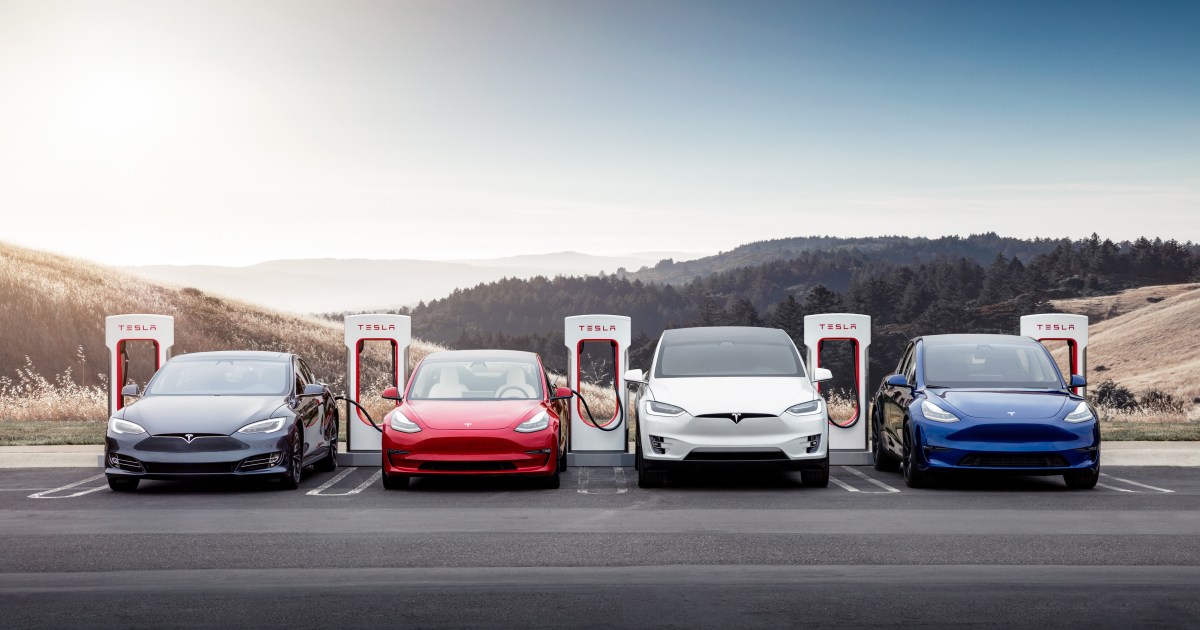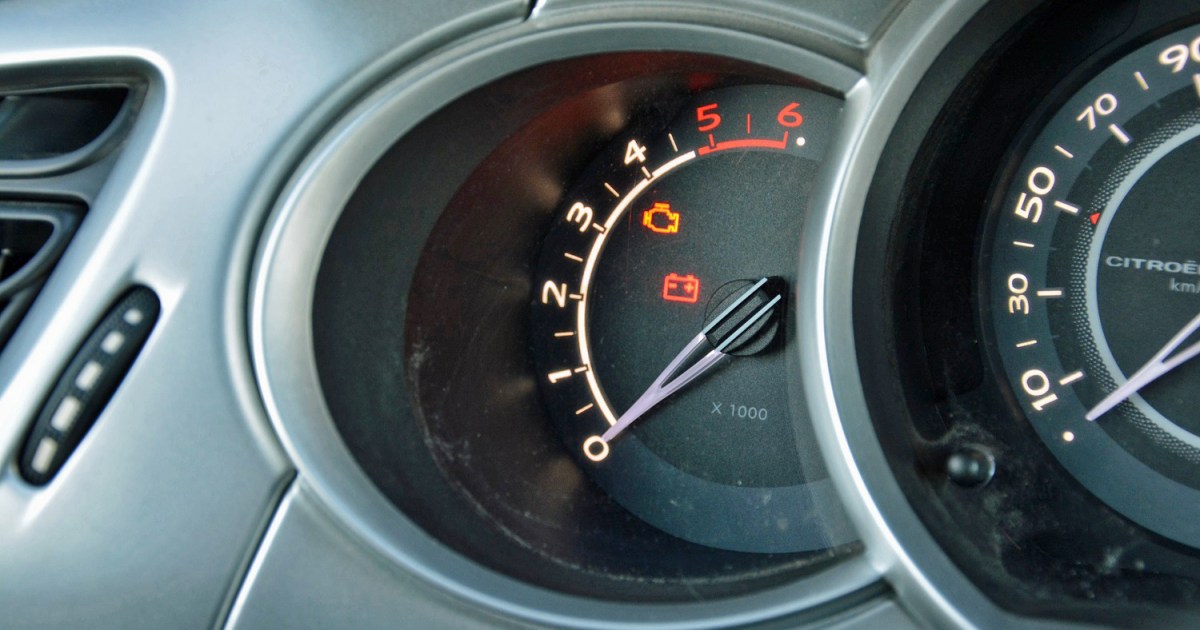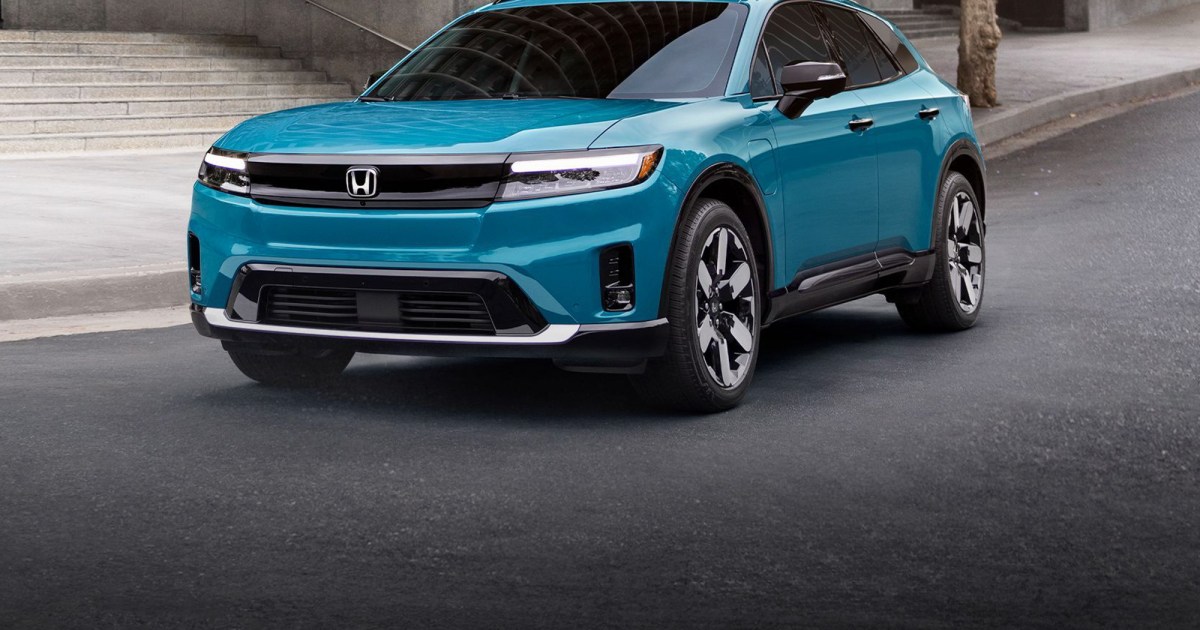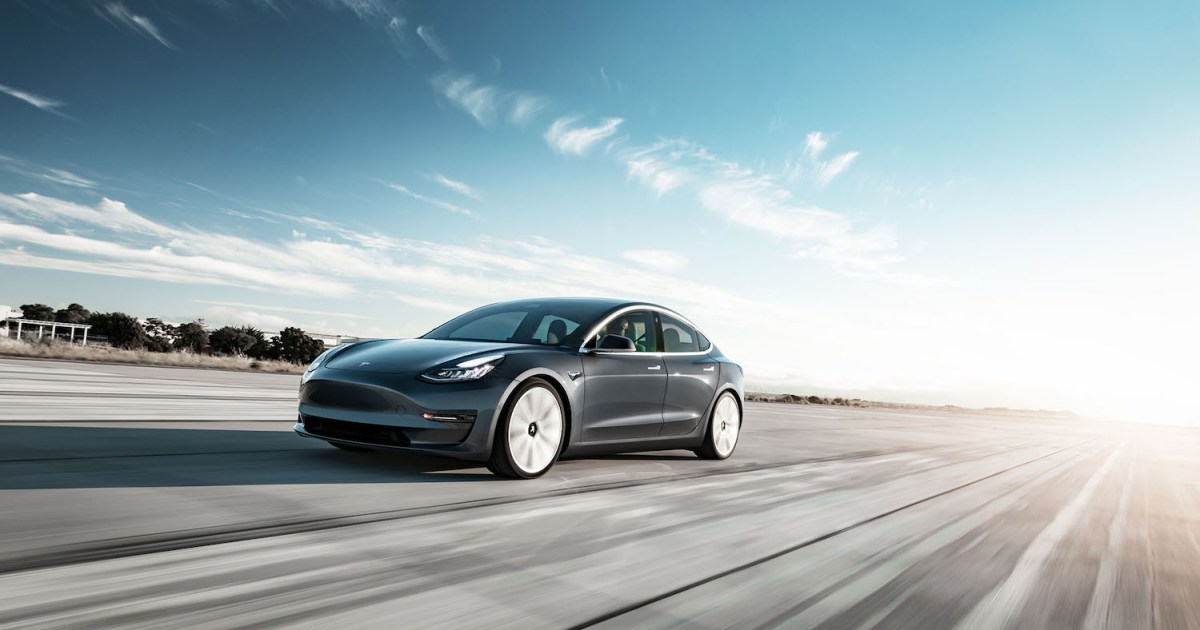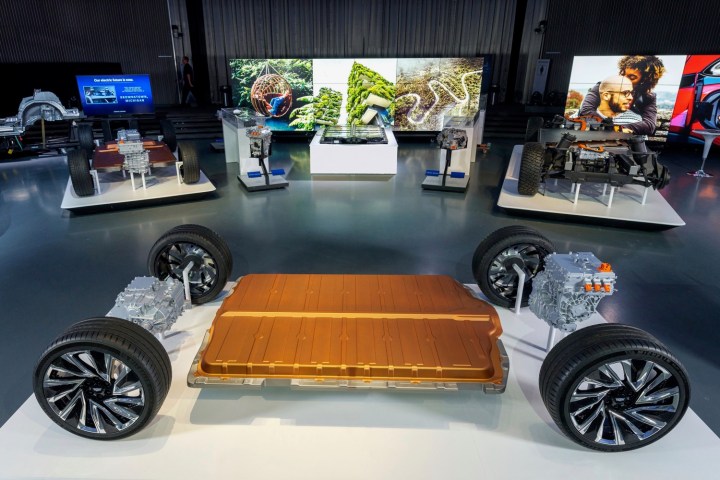 alt text: Close-up of the GM Ultium EV platform battery pack.
alt text: Close-up of the GM Ultium EV platform battery pack.
Electric vehicles (EVs) are becoming increasingly common, bringing with them a new set of specifications to consider. Range is an obvious one, but another crucial factor impacting the EV ownership experience is voltage. You’ll often see an EV’s battery pack voltage highlighted in advertisements. Hyundai, for example, boasts about the 800-volt battery in the EV6, double the 400V battery in the Tesla Model Y. But what does this difference actually mean for you? This article explains everything you need to know about EV voltage.
Understanding Electricity Basics
When you plug your EV into a charger, electricity flows from the charger to the car’s battery. This flow is measured in watts, volts, and amps, each representing a different aspect of the process. Voltage is relatively easy to grasp using a simple analogy: think of electricity as water and voltage as water pressure. Higher voltage means higher pressure, pushing more energy through with less current.
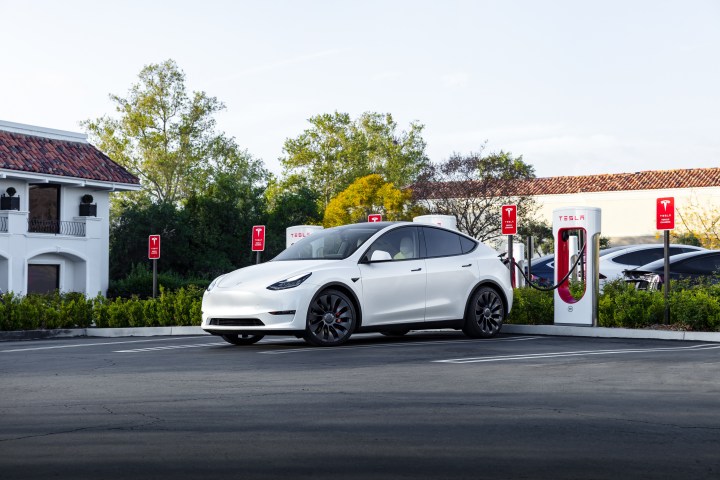 alt text: A white Tesla charging at a Supercharger station.
alt text: A white Tesla charging at a Supercharger station.
Continuing the water analogy, amps (current) represent the size of the pipe. To move a large volume of water, you can either increase the pressure or widen the pipe. Electricity works similarly. Charging speed depends primarily on voltage and current. Higher voltage requires less current, while lower voltage necessitates higher current.
Watts express overall power, calculated by multiplying voltage and amperage. For example, 120 volts at 1 amp equals 120 watts. This represents the power transferred at a given moment. EV battery capacity is measured in watt-hours (Wh) or kilowatt-hours (kWh). A 100kWh battery can supply 100kW (100,000 watts) for an hour.
The Advantages of Higher Voltage
Simply put, faster charging requires either higher voltage or higher current. However, increasing current leads to greater energy loss and heat, making it less efficient for achieving faster charging speeds. Therefore, increasing voltage (the “pressure”) is the more effective approach.
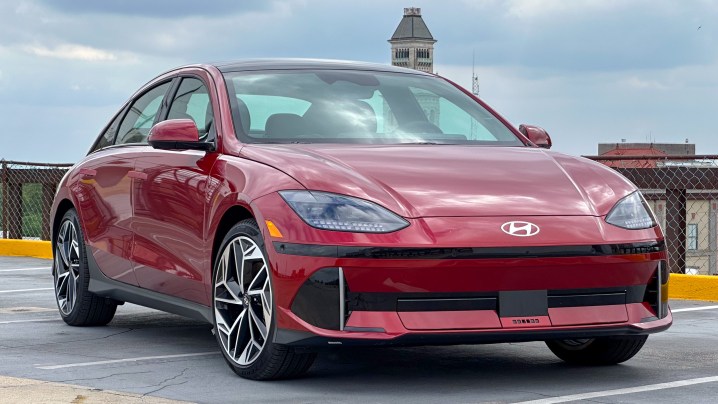 alt text: A red Hyundai Ioniq 6, showcasing its 800V architecture.
alt text: A red Hyundai Ioniq 6, showcasing its 800V architecture.
Since higher current generates more heat and energy loss, higher-voltage EVs also conserve power more effectively. High-voltage batteries not only deliver more power but also ensure that more of that power reaches the motor, improving efficiency and preserving battery health.
Why Aren’t All EVs High-Voltage?
Implementing a higher-voltage system requires manufacturers to redesign circuits and components for safety and reliability in the higher-voltage environment.
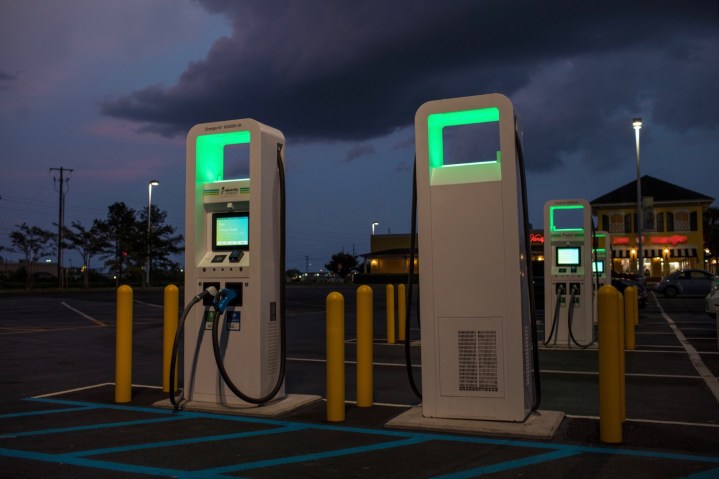 alt text: Two Electrify America charging stations, capable of delivering high-power charging.
alt text: Two Electrify America charging stations, capable of delivering high-power charging.
This redesign process, along with the higher cost of the necessary components, adds significant expense. The primary reason not all EVs use 800V batteries is simply cost.
Examples of 800V EVs
Currently, a higher-voltage system generally refers to 800V, although even higher voltages are possible. Lucid, known for its range and charging speed records, already uses 900V battery packs.
Notable 800V EVs include the Kia EV6, Hyundai Ioniq 5, and Hyundai Ioniq 6. These models offer both high-voltage systems and relatively reasonable prices, enabling 350kW charging, the fastest widely available speed. Other manufacturers like Porsche and Audi have also adopted higher-voltage systems, offering vehicles capable of utilizing the full 350kW charging capacity.
More 800V EVs are on the horizon, such as the Kia EV9. However, Kia has announced that some of its upcoming, more budget-friendly models will stick with 400V architectures. Ideally, 400V systems will become less prevalent in the next few years.
400V EVs with 350kW Charging
Some 400V EVs, like the Hummer EV, can still achieve the maximum 350kW charging speed typically associated with 800V systems.
 alt text: A GMC Hummer EV, demonstrating its fast-charging capabilities despite a 400V architecture.
alt text: A GMC Hummer EV, demonstrating its fast-charging capabilities despite a 400V architecture.
The Hummer EV achieves this through a dual-layer battery, with each layer charging semi-independently. However, this approach is less common, and manufacturers are likely to transition to full 800V architectures over time.
While 800V EVs offer clear advantages, widespread adoption may still take some time. Given the importance of fast EV charging, hopefully, this transition will happen sooner rather than later.



